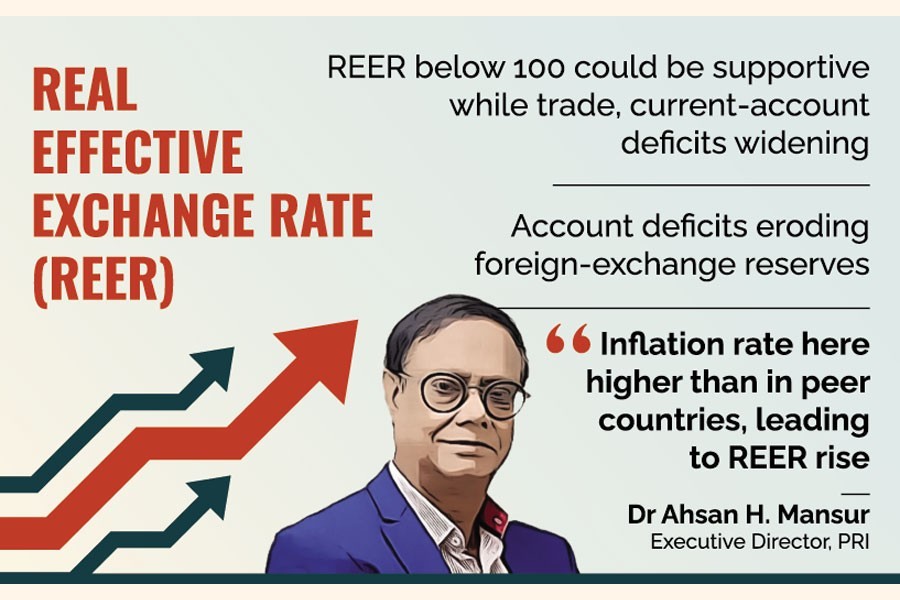Real effective exchange rate (REER) of Bangladesh's currency against a basket of currencies of global trading partners soared to its highest peak in many years, weakening country's competitive edge.
The REER as an index was recorded at 114.9 in September 2021 compared to 110.55 in June in the past year.
An increase in a nation's REER is an indication that its exports are getting more expensive and its imports becoming cheaper. The end-result: its trade competitiveness is on the way down.
It is an indicator of international competitiveness of a nation in comparison with its trade partners.
REER as an index is considered at fair value when it is around 100 and supportive of the current account when below 100 and unsupportive when it rises above the 100 mark.
A REER reading below 100 is supportive of countries like Bangladesh whose trade-and current- account deficits have widened to challenging levels in recent months.
Such gaping deficits are causing a reduction in the country's foreign-exchange reserves. The forex reserves stood over $44.9 billion during the second week of January.
Economists believe that an increasing REER indicates that Bangladesh is losing its competitive edge over its competitors in trade on the global market.
Dr Ahsan H. Mansur, executive director at the Policy Research Institute of Bangladesh (PRI), told the FE that Bangladesh's rate of inflation remained higher than its peer countries, leading to rise in the REER.
In addition to the currency value, the factors that are taken into account in calculating the REER value include inflation reading in the country and its trading partners and the value of goods of two trading partners in a third country.
He says the country's export receipt has been on the rise amid the high REER and "the export would have been much higher if the REER became supportive".
The country's export increased over 28 per cent to US$ 24.7 billion during the last July-December period.
On the other side of the foreign trade front, import soared by 54 per cent to $ 33.7 billion during the first five months of the current fiscal year.
Dr Masrur Reaz, chairman at Policy Exchange of Bangladesh, another local think-tank, told the FE that the drop in the REER is a reflection of nominal exchange drop.
The nominal exchange rate (NER) depreciated 1.4 per cent to Tk 86.0 (intern-bank Tk-USD exchange rate) in January over the same period a year earlier. But the 'kerb-market' rate remained much higher.
He thinks there is a challenging issue as to how much to devalue the local currency-a macroeconomic measure that has a two-pronged negative impacts on the economy.
"If we devalue much our currency, the imports will be expensive, leading to rise in inflation," he says about the fallout from devaluation.
He finds balancing export-competitiveness through exchange rates and devaluation as a tough task.
However, exporters expect the currency should have depreciated much more to help them stay competitive on the global market.


